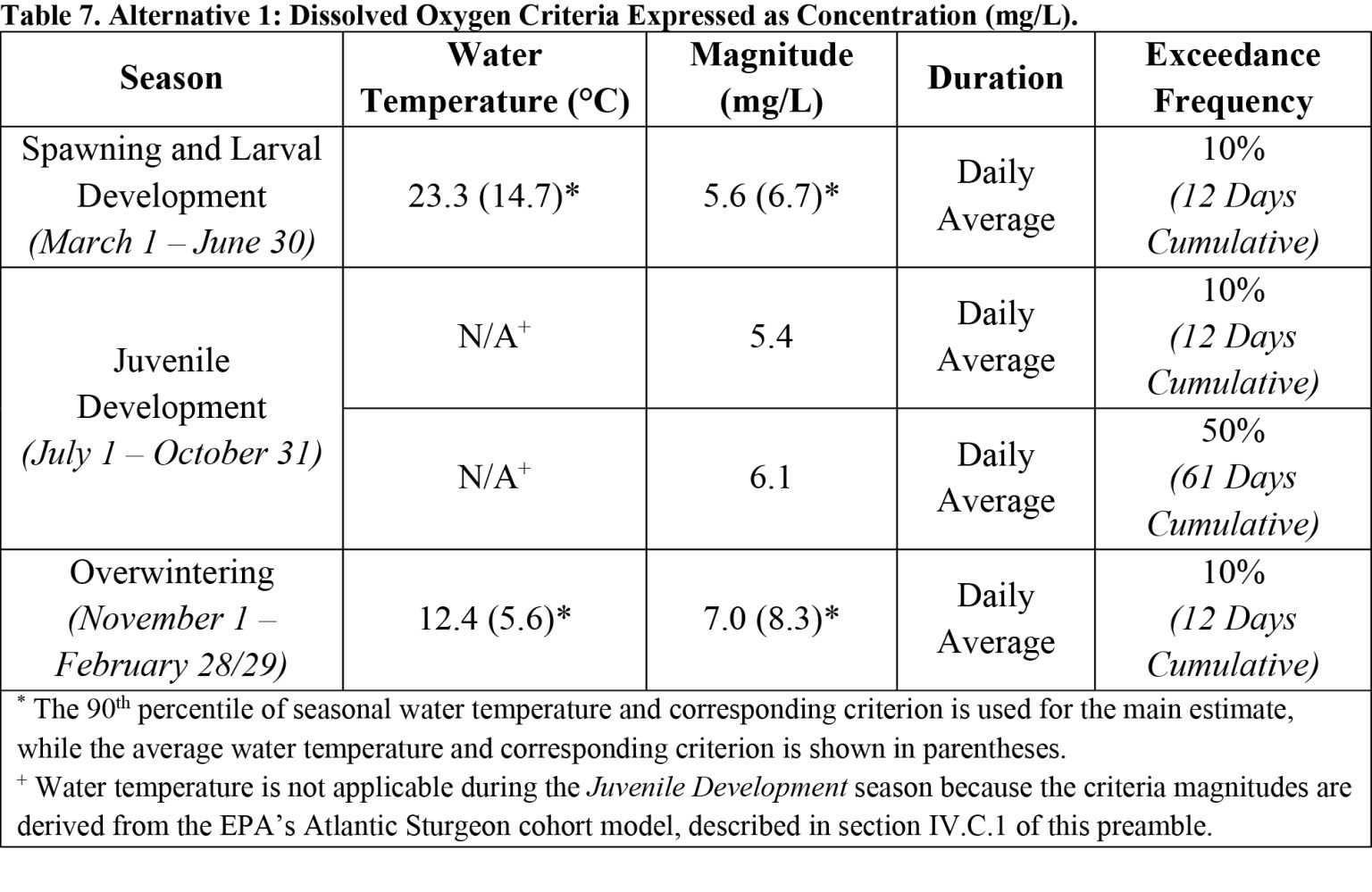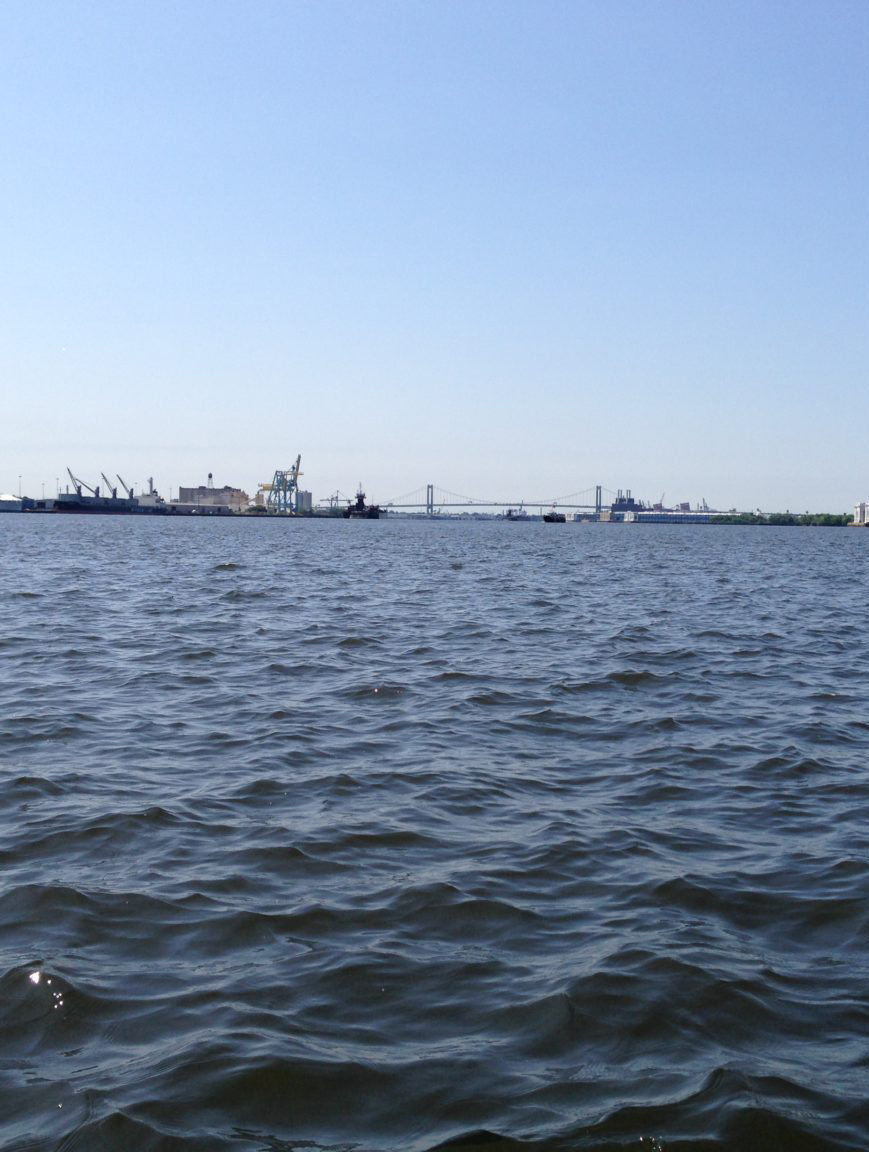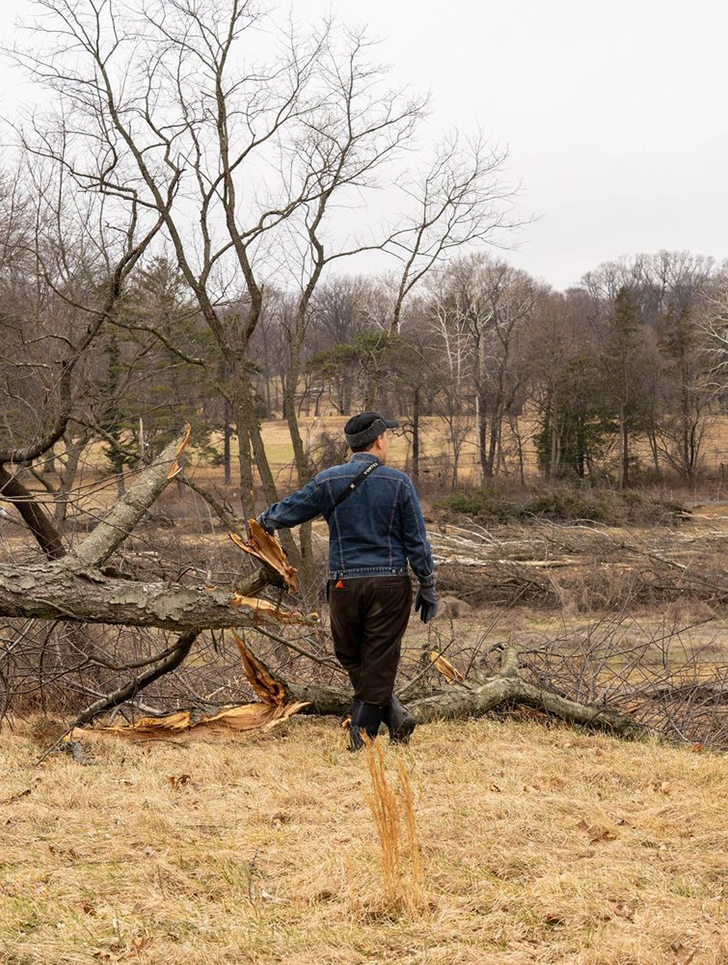Coverage courtesy of Delaware Currents.

All in all, it was a good week for the Delaware River.
Two significant developments point toward possible improvements in water quality in the urban section of the river — approximately from Philadelphia, Pa., to Wilmington, Del.
Both hinge on the problem of ammonia pollution and related to that, the combined sewer overflow systems that are common in older cities that contribute to the problem.
The U.S. Environmental Protection Agency announced last week that it’s proposing new rules to raise the oxygen level required in that section, getting dissolved oxygen there closer to the levels in the rest of the river, thus making the urban section of the river healthier.
“That’s great news,” said John Jackson, senior research scientist at the Stroud Water Research Center. “It’s not just the estuary, but a reflection of the whole watershed, because the whole watershed integrates in the estuary.
“This is a 60- 70-year gradual improvement. It reflects the efforts of so many people,” he added. “Nobody gets all the credit. Everybody gets the credit.”
Dissolved oxygen in the river is one measure of water quality and is important for aquatic life, especially for the Atlantic sturgeon, which is a federally designated endangered species.
Like us, fish “breathe” oxygen, just not from the air, but dissolved oxygen in the water.
The other promising development came from the Philadelphia Water Department.
It held a public presentation last week for a $70 million state-of-the-art side-stream “deammonification” facility that will be built alongside the Southwest Water Pollution Control Plant starting in the summer of 2024.
As for financing the project, the department said it was seeking a low-interest loan from the state’s PENNVEST fund and that it did “not anticipate a significant impact on user fees as a result of this project.”
Once constructed, the “facility will remove approximately 10 percent of the city’s load of oxygen-depleting ammonia at a reasonable cost and with a relatively small environmental footprint,” the department said.
But that move has its critics, namely the Delaware Riverkeeper, Maya van Rossum:
The PWD proposal is a good one, but it is quite shocking that they are only now taking action to address this important issue. PWD is the largest source of DO-destroying ammonia discharges. The city has known for decades that there is existing technology to address this issue and that if they were unwilling to do so voluntarily that at some point they would be required to legally. To, at this point, only be addressing a small percentage of their ammonia discharges demonstrates a failure of leadership and a betrayal of the public trust. We are glad they are finally doing something, but doing just something is not the same as taking responsibility for the city’s contribution to polluting our river to such a degree and in such a way that we have put an entire sturgeon population on the brink of total collapse.
How we got here
Ammonia? Combined sewer overflows? Dissolved oxygen?
Confused? That’s not surprising. Let’s take a step back.
Way back in the past, pre-Industrial Revolution, when the population was much smaller, our rivers could “treat” waste with the activity of hungry microbes.
When the load of that waste got too heavy, that microbe activity was overwhelmed and back in the 1960s, the Delaware River was basically an open sewer.
The Delaware River Basin Commission worked with states and municipalities to develop wastewater treatment facilities to change that, with the help of the Clean Water Act (1972).
In many cities, there is also the problem of combined sewer overflow systems — a complication that allows stormwater to be funneled into the sewer lines and to the wastewater treatment facilities.
If the storm is great enough, those treatment facilities get overwhelmed and untreated or partially treated waste get poured into the river, and that includes more ammonia as well as the universe of “stuff” that gets poured or flushed down the drain.
The DRBC promulgated new dissolved oxygen criteria for the river in 1967. Note how the urban area had less stringent criteria, a reflection of the reality that, at the time, higher criteria weren’t achievable.

To see the zones, check the map below:

We’re going to get graphic: that overwhelming waste was our — human — poo and pee.
The most important problem to get solved back then was the “poo” problem — all the carbon elements in the water.
The river is way healthier than it was back then because of wastewater treatment facilities that were built all over the watershed with either grants from the federal government or low-interest loans.
Back then, the “pee” problem was considered secondary.
Now, it’s front and center.
When the river scientists and engineers talk about an ammonia problem, they’re talking about pee.
That’s a nitrogen problem, and the urban corridor from Philadelphia, Pa., to Wilmington, Del., is where that problem is at its most acute.
Spotlight on the Atlantic sturgeon
Enthusiasts of the river might want to have the river as healthy as possible just for people and in fact, the aim of the Clean Water Act is to get all the waters of the U.S. “fishable and swimmable” but the federal government gets really interested when the water quality threatens an endangered species, in this case the Atlantic sturgeon.
The population of the sturgeon has diminished, likely for a variety of reasons, like ship strikes from the heavy traffic of huge container ships in this part of the river, but a big part of the problem is oxygen depletion.
The young of sturgeon are especially not thriving.
Before humans started interfering with the river, sturgeon had the run of it to spawn and for the young to develop before they headed to the open water of the Atlantic.
Once we created that “open sewer,” there was almost a wall of less-or-no oxygen in that urban stretch.
Though maybe an adult sturgeon could hold its breath (that’s not a scientific expression) and get through it, the young could not.
That patch where the dissolved oxygen supply can be low (especially during the summer) is the target of scientific inquiry and debate — and lots of arguments.
To address this problem will cost millions, maybe billions
Where is the dissolved oxygen problem coming from?
Well, it’s us, of course. And where it’s coming from is where the population is densest, in that urban corridor.
After investigation, the Delaware River Basin Commission listed, back in 2019, 12 wastewater treatment plants that were all significant contributors to the dissolved oxygen problem and they are all municipal wastewater treatment plants:
- PA Philadelphia Water Department, Southwest
- PA Philadelphia Water Department, Northeast
- PA Philadelphia Water Department, Southeast
- PA Lower Bucks County Joint Municipal Authority
- PA DELCORA (Delaware County Regional Water Quality Control Authority) DELCORA is in the middle of a planned purchase by Aqua Pennsylvania, which will make it the largest wastewater treatment plant in the watershed not operated by its municipality.
- PA Morrisville Borough Municipal Authority
- NJ Camden County Municipal Utilities Authority
- NJ Gloucester County Utilities Authority
- NJ Hamilton Township (Mercer County) Water Pollution Control Facility
- NJ Trenton Sewer Utility
- NJ Willingboro Municipal Utilities Authority
- DEL City of Wilmington Department of Public Works
Remember, these plants are municipal: All of them get money from customers to treat that wastewater.
To some degree, they will all need to get more money from somewhere (state? feds? loans? grants? our wallets?) to make the next level of improvements.
And that next level of expenditure is significant, as outlined by the DRBC’s consultant, Kleinfelder, in a report in 2021.
In that report, Willingboro Municipal Utilities Authority gets off “cheap” at an estimated cost of $52 million. The largest cost is for the largest city, Philadelphia, at a whopping $3 billion.
This story discusses that and lists costs by treatment facility.
In the EPA’s documentation of its proposed rule-making, it would cost an average of $137.1 million over 30 years to meet its objectives, basing its projections on the DRBC/Kleinfelder study.
Why did it take so long?
You may have noticed that a name keeps cropping up as we talk about dissolved oxygen in the river: the Delaware River Basin Commission.
As outlined in its governing documents, the DRBC has the responsibility for the river’s water quality as well as its quantity.
Remember, the DRBC is the governors of the four basin states and a representative of the federal government — the U.S. Army Corps of Engineers.
In a resolution in 2017, the commissioners asked the staff to:
- Perform a study to determine the attainability of an improved aquatic life designated use of fish propagation in a 38-mile stretch of the Delaware River Estuary around Philadelphia, Camden & Wilmington
- Initiate a formal public rulemaking process on a proposed revised designated use and water quality criteria to protect that use and an implementation strategy
The plight of the sturgeon was well documented before that resolution, and remember that commissioners are political and sensitive to political pressure.
But once that resolution was passed, the work of the DRBC became scientific and technical — and time-consuming. (Read more detail about that process here.)
Jackson, from Stroud Research, noted it’s not surprising that it took time to come to the point that new rules could be proposed — building the model that the DRBC built and that the EPA used, takes time.
Jackson also pointed out that without a map that shows where the ammonia is coming from, none of the wastewater plants wants to do anything.
“That’s why it took eight years. Feet need to be held to the fire,” he said.
Part of the reason for the painstaking scientific work undertaken by DRBC staff is to prove the point that improvements had to be made and where.
There was an interruption in the timetable due to Covid, but otherwise the staff were pretty much on schedule.
Right from the get-go, back when this was a topic of conversation at the DRBC’s Water Quality Advisory Committee meetings before there was that resolution, there was a split:
On one side was an approach that called for deliberate technical and scientific work to pinpoint the location of the problem and what to do about it.
The other side urged speed to get those standards raised ASAP and let the municipalities figure out how to do it. That side was well represented by van Rossum, the Delaware Riverkeeper.
Eventually in April 2022, she was joined by four other environmental organizations in a petition to the EPA to step into that process since they felt it was acting too slowly for the sturgeon.
The others were: Clean Air Council, PennFuture, Environment New Jersey and PennEnvironment.
And surprisingly, in December 2022, the EPA agreed.
Then in September, the DRBC ceded its authority for rule-making on aquatic life uses to the EPA.
Here are the new rules being proposed by the EPA.

Not surprisingly, the dissolved oxygen level is raised from its current 3.5 mg/L. It’s interesting to note that there are three new sets of standards, depending on the time of year, which are a reflection of the sturgeon’s sensitivity to oxygen depletion at different life stages.
And now, the EPA is setting up the timetable for public hearings with a view to establishing these rules by the end of 2024. (Read more details here.)
From the DRBC’s executive director, Steve Tambini: The DRBC appreciates the EPA’s partnership in applying world-class science to the complex challenge of improving Delaware River Estuary dissolved oxygen levels. As waterbodies around the country struggle to achieve and maintain measurable water quality improvements that balance ecological needs with economic growth and water affordability, the Delaware River Estuary is a model for federal and interstate collaboration on shared clean water goals. The DRBC will continue to work with the EPA, our state environmental agencies, and stakeholders to plan for the implementation of revised aquatic life use standards proposed in this rulemaking to improve water quality in the Delaware River Estuary.
And though inspired in some way by the pleas for action from environmental organizations, the EPA was criticized by the Delaware Riverkeeper as not going far enough to fully protect the sturgeon.
The Riverkeeper requested that the standards proposed be increased, especially as the EPA receives public input at its public hearings, set for Feb. 6 and Feb. 7.
From van Rossum:
Today, with the leadership of the EPA, we begin the process of considering meaningful oxygen restoration for the Delaware River. It is essential that over the course of the next two months, during the public comment period, the EPA take full stock of the science and lift their standards to the degree necessary to ensure future generations are able to enjoy witnessing a live, healthy and free-swimming Delaware River Atlantic sturgeon.
But Jackson sounded a celebratory note.
First, it’s great news, he said. In 2015 there were indications that the river was host to healthier fish populations than anyone knew.
“But those populations weren’t recognized, weren’t protected,” he said.
The second reason for celebration, he said, is that “now there’s some safeguard that we won’t go backward.”
And third: “This opens the door for next steps. It’s aspirational: What do we want our river to be in 50, 75 years?”








